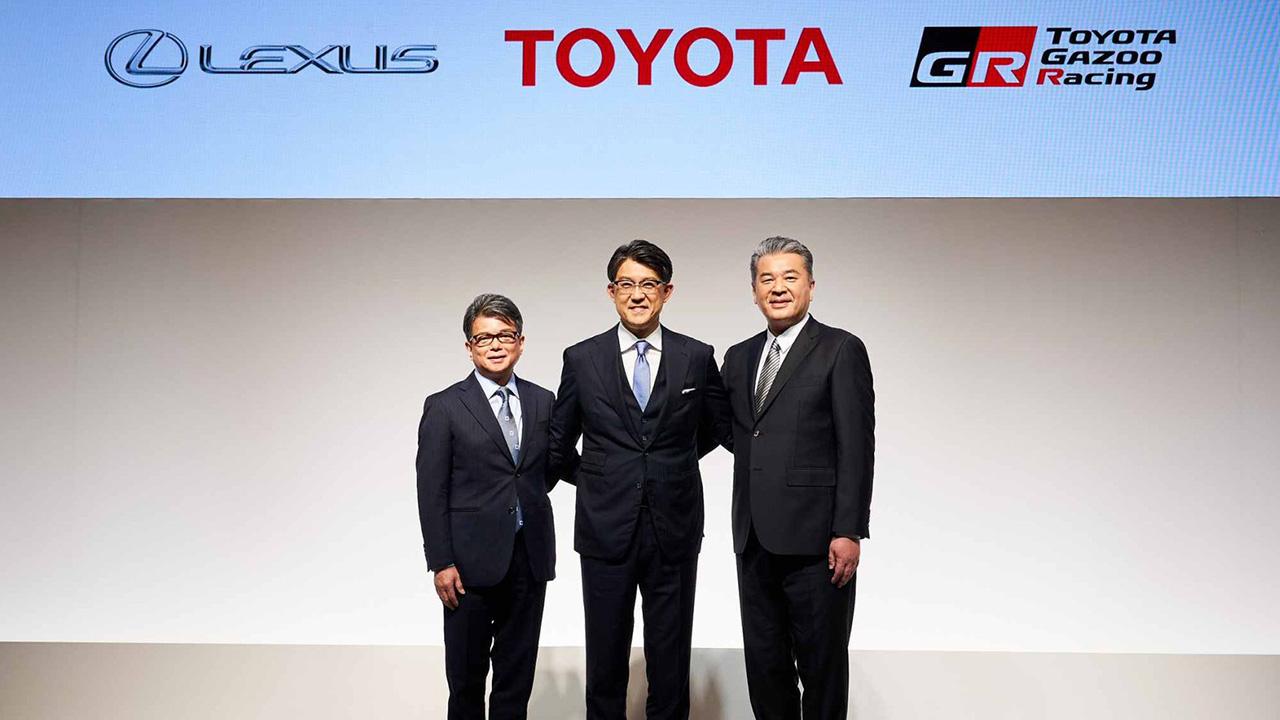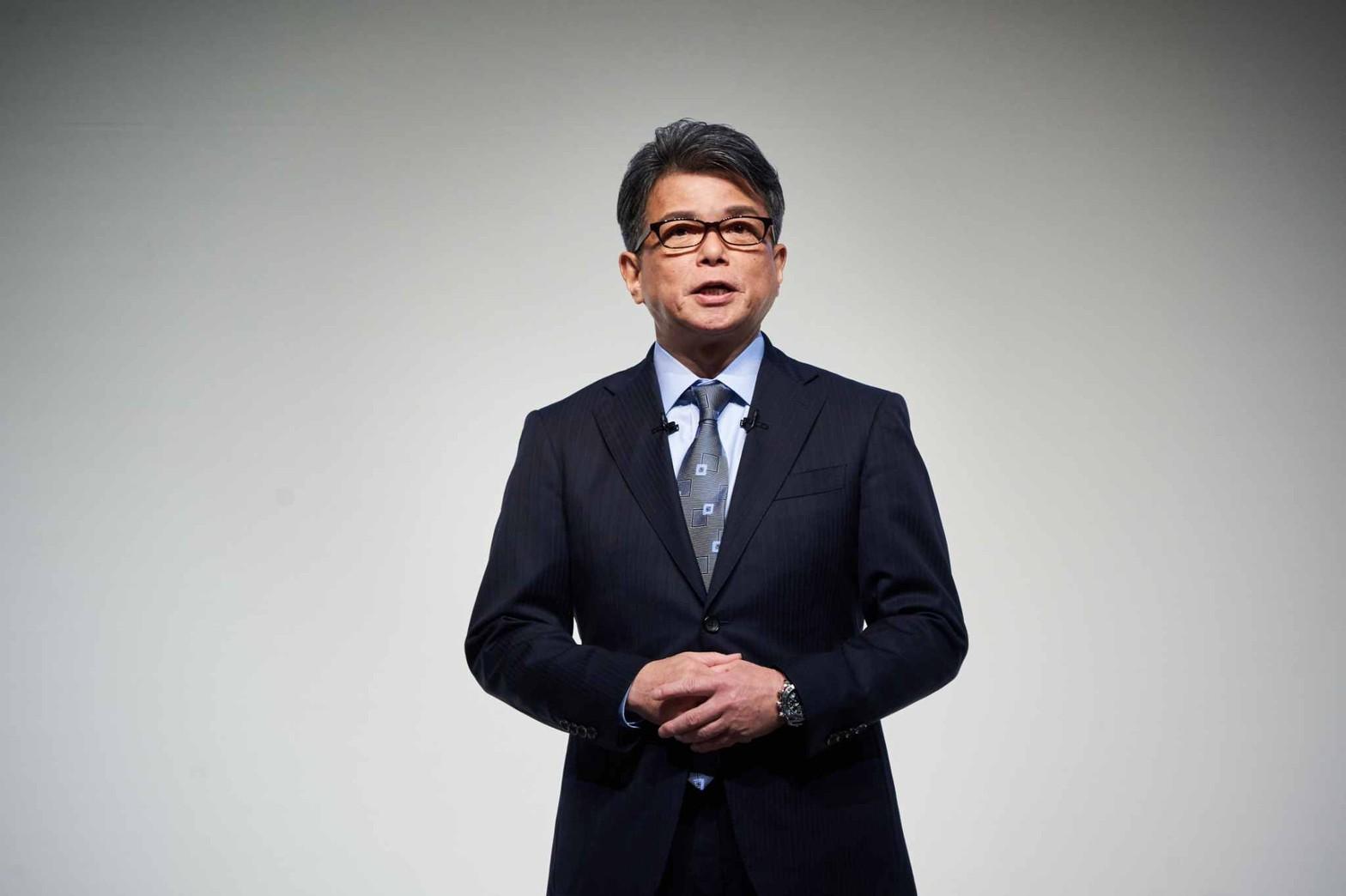
The eyes of the world were on a recent briefing about Toyota's new management structure. There, new President Koji Sato explained the journey of transformation into a mobility company.
Emissions cuts equivalent to 7.5 million BEVs
Vice President Nakajima passed the microphone to Vice President Miyazaki who talked about region-centered management.
Vice President Miyazaki

I have spent my career mainly in the overseas sales area.
I hope you will remember me as the CFO connected to the regional CEOs.
The Toyota Mobility Concept, as Mr. Sato explained, cannot be realized without a solid business foundation and it is important to maintain and strengthen this solid business foundation.
I would like to begin with a review of the role that region-centered management has played and the results it has achieved so far.
Aiming to become the "best-in-town carmaker", under the call of "Let's make ever-better cars" while carefully responding to the individuality and needs of each region, we have provided high-quality cars one by one under the leadership of the regional CEOs, based on the Toyota New Global Architecture or TNGA.
As a result, we have increased sales in growing emerging markets and achieved an exceptionally balanced regional sales mix.
Also, in addition to lowering R&D costs and incentives through the effect of implementing TNGA, and with the "timely product improvement that meet the needs of each region", which is our strength, as a result of our continuous efforts to build up "cost reduction working together with our suppliers",earning power has grown overwhelmingly compared to the past, and we have evolved into a structure that allows us to grow our earnings while investing in the future for further growth.
Also, with our employees, shareholders, and suppliers, we have together built a cycle of growth.
In addition, we have also actively promoted the introduction of electrified vehicles, and since the introduction of the first-generation Prius, a cumulative total of 22.5 million units have been sold, which is equivalent to CO2 emissions reduction of approximately 7.5 million battery EVs.
The lead role was played by hybrid electric vehicles. We have refined the performance and cost by each successive generation.
As a result, the cost of hybrid systems has dropped to one-sixth of the original cost, and now able to make profit, comparable to that of gasoline-powered vehicles.
In this way, Toyota has greatly been able to enhance its earning power while investing in the future, growing with stakeholders, and reducing CO2 emissions.
This is precisely what we have achieved so far through our region-centered management, which is based on our efforts to make ever-better cars.
We will continue to deepen our region-centered management and further solidify the business foundation.
Carbon emissions know no borders
Vice President Miyazaki
To do so, the first thing that we must address is how to achieve carbon neutrality.
Carbon knows no borders, and CO2 reduction is an issue that cannot wait. We need to immediately start with what we can do.
Therefore, taking into account local conditions and the diverse ways of using cars. To spread the use of electrified vehicles as quickly as possible and as many as possible, we need to be very attentive to the needs of our customers.
Therefore, with enhancement of Battery EV lineup, we will continue to enhance the attractiveness and competitiveness of all powertrains, including hybrid and plug-in hybrid vehicles.
Dramatically expanding product lines in developed markets to prepare for next-generation BEVs
Vice President Miyazaki
From here, I will touch upon the Battery EV's initiatives in each region.
In developed countries, in parallel with the preparation of next-generation battery EVs, with a focus on the bZ series and with further refined performance, we will greatly expand our product lineup.
In the U.S., we will start the local production of a 3-row SUV in 2025.The SUV will be equipped with batteries to be produced in North Carolina, and the production capacity will be increased.
Also in China, in addition to the bZ4X and bZ3 which was announced last month, we will launch two models of locally developed battery EVs in 2024, fit to the local needs.
And will continue to increase the number of models in the following years.
In Asia and other emerging markets, we will make sure to respond to the growing demand for battery EVs.
Specifically, by the end of the year, we will start local production of the battery EV pickup trucks and will also launch a small battery EV model.
In developed countries, the switch to BEVs is moving forward as the market matures, while in emerging markets, the market is expected to expand due to demand for new and additional vehicles.
Toyota, with its full lineup and profitable hybrids and plug-in hybrids, along with the increasing demand for battery EVs and diverse options will make sure to meet a wide range of global demand and is committed to further growth.
Responding to growth in emerging markets with HEVs as a source of income
Vice President Miyazaki
In summary, for growth in emerging markets, profitable hybrids will be used as a source of income, and with a value chain of 10 million units, we will also take in a wide range of business opportunities.
In addition, we are committed to performing cost reduction by leveraging the strengths of TPS and Kaizen to the fullest extent.
As a result, we will further create a future investment capacity for the expansion of battery EV growth in mobility areas, and we will establish a strong business foundation whereby carbon neutrality and growth can both be achieved.
Going deeper to be even more welcome locally
Vice President Miyazaki
From here, I will explain what we will be working on to realize the Toyota Mobility Concept.
While the technological innovations of electrification, intelligence and diversification are progressing, we would like to take on the challenge of contributing to the region and industrial rewarding from a more expanded perspective.
For example, in the United States, the automotive industry is at a critical juncture, with people moving away from manufacturing and with structural costs increasing.
By combining worksite-honed craftsman skills with intelligence to propose new ways of manufacturing and new "automation with human intelligence" processes, we can repay our debts in the form of preserving manufacturing in America while solving the country's labor shortage problem.
We also announced an overview of collaborations with Charoen Pokphand and the Siam Cement Group in Thailand, which was announced on 3 April.
This is the start of an implementation that uses electrification and connected technologies to connect vehicles, people and information, and utilize mobility as if it were part of the social infrastructure.
Through these initiatives, we will take on the challenge to solve regional problems such as serious traffic congestion, air pollution and frequent road accidents.
We believe that this approach is one way of realizing the mobility concept.
While leaving no one behind, contributing to the achievement of carbon neutrality, and addressing social issues, we will advance our transformation toward becoming a mobility company.
The source of further growth is to have people say, "Toyota can keep on doing its best here."
Having the same standards and way of thinking as the world and looking inwards from the outside. As well as, flexible thinking and a willingness to take on challenges and take positive action.
Putting into practice these principles, we will grow as a company that is even more deeply accepted by the local community.
Transcending the norm with our colleagues
Finally, President Sato took the podium again to talk about the strong will, passion, and action that will change the future of the automobile.
President Sato
Toyota's efforts to become a mobility company were explained by Mr. Nakajima from the perspective of products and technology, while Mr. Miyazaki spoke from the perspective of regional management.
No matter how times change, Toyota is a company that manages by way of its products.
And we are a company that intends to produce happiness for all by responding to the diversification of its customers and societies around the world.
I believe that there is a future mobility society that Toyota can aim for only because it has refined the strength of its full lineups worldwide.
Efforts based on the Toyota Mobility Concept for realizing a future mobility society have already begun, such as a social implementation project in Thailand.
Doing what we can now for the future, right away. With this in mind, we will act together with our colleagues.
In an uncharted era, I believe that it is action based on strong will and passion that will change the future.
The important thing is to first act. Stop, and the landscape will not change.
Going beyond the norm and taking on challenges...together with our colleagues.
The future of mobility that is unique to a carmaker and unique to Toyota lies ahead of us as we continue to move in this way.
I believe that.
Let's change the future of cars!
This is our theme as we aim to become a mobility company.
Based on our unshakable motives, we will take on challenges with strong will and passion.

